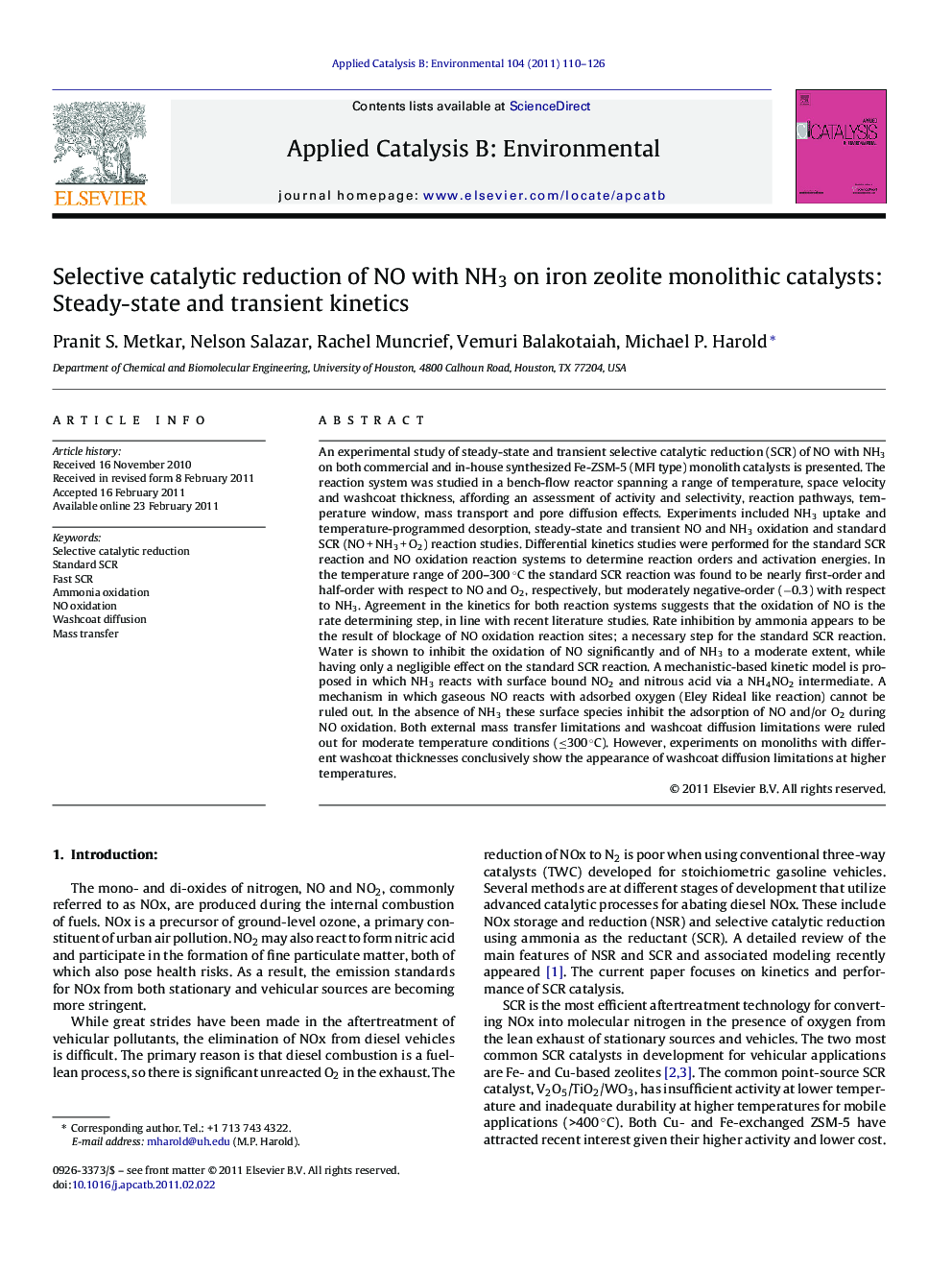| کد مقاله | کد نشریه | سال انتشار | مقاله انگلیسی | نسخه تمام متن |
|---|---|---|---|---|
| 46834 | 46450 | 2011 | 17 صفحه PDF | دانلود رایگان |

An experimental study of steady-state and transient selective catalytic reduction (SCR) of NO with NH3 on both commercial and in-house synthesized Fe-ZSM-5 (MFI type) monolith catalysts is presented. The reaction system was studied in a bench-flow reactor spanning a range of temperature, space velocity and washcoat thickness, affording an assessment of activity and selectivity, reaction pathways, temperature window, mass transport and pore diffusion effects. Experiments included NH3 uptake and temperature-programmed desorption, steady-state and transient NO and NH3 oxidation and standard SCR (NO + NH3 + O2) reaction studies. Differential kinetics studies were performed for the standard SCR reaction and NO oxidation reaction systems to determine reaction orders and activation energies. In the temperature range of 200–300 °C the standard SCR reaction was found to be nearly first-order and half-order with respect to NO and O2, respectively, but moderately negative-order (−0.3) with respect to NH3. Agreement in the kinetics for both reaction systems suggests that the oxidation of NO is the rate determining step, in line with recent literature studies. Rate inhibition by ammonia appears to be the result of blockage of NO oxidation reaction sites; a necessary step for the standard SCR reaction. Water is shown to inhibit the oxidation of NO significantly and of NH3 to a moderate extent, while having only a negligible effect on the standard SCR reaction. A mechanistic-based kinetic model is proposed in which NH3 reacts with surface bound NO2 and nitrous acid via a NH4NO2 intermediate. A mechanism in which gaseous NO reacts with adsorbed oxygen (Eley Rideal like reaction) cannot be ruled out. In the absence of NH3 these surface species inhibit the adsorption of NO and/or O2 during NO oxidation. Both external mass transfer limitations and washcoat diffusion limitations were ruled out for moderate temperature conditions (≤300 °C). However, experiments on monoliths with different washcoat thicknesses conclusively show the appearance of washcoat diffusion limitations at higher temperatures.
Figure optionsDownload as PowerPoint slideResearch highlights
► Lean catalytic reduction of NO by NH3 selective to N2 on Fe-ZSM-5.
► NO oxidation to NO2 is rate limiting step.
► Water inhibition of NO oxidation significant, negligible for SCR.
► Competitive adsorption of NH3 on active sites inhibits NO reduction.
► Washcoat diffusion limitations emerge above 300 °C.
Journal: Applied Catalysis B: Environmental - Volume 104, Issues 1–2, 27 April 2011, Pages 110–126